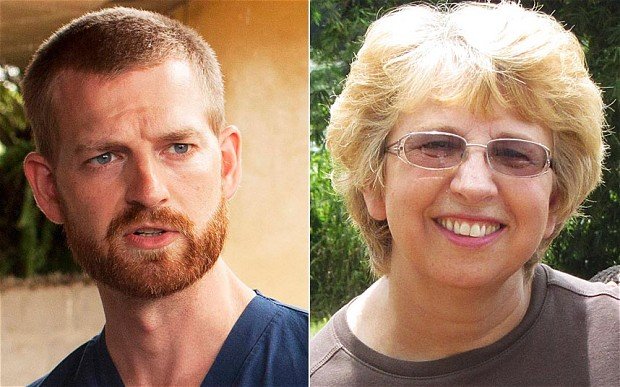ZMapp: What you need to know about Ebola experimental drug?
ZMapp, the experimental drug given to Dr. Kent Brantly and Nancy Writebol to fight the Ebola virus, seems to be working, according to health specialists.
The untested drug was developed by San Diego-based Mapp Biopharmaceuticals.
What we need to know about ZMapp:
1. ZMapp is made from tobacco leaves
ZMapp is made from the leaves of modified tobacco plants, specifically, the Nicotiana benthamiana plant, Bloomberg reported. The tobacco leaves, which typically do more harm than good in regard to human health, help combat the Ebola virus because of the compound that’s created from their modification. The combination of compounds in ZMapp includes a compound called MB-003 and another called ZMAb. MB-003 protected 100% of monkeys exposed to the Ebola virus immediately after exposure. ZMAb provided 100% survival to monkeys one day after exposure. That number decreased to 50% after two days, according to NBC News. Erica Ollmann Saphire, a professor of immunology at the Scripps Research Institute in La Jolla, California, said that one of the antibodies in the serum helps alert the immune system to the presence of infected cells so they can be destroyed. The other two antibodies seem, “to neutralize the virus,” Prof. Erica Ollman Saphire told WebMD.

ZMapp, the experimental drug given to Dr. Kent Brantly and Nancy Writebol to fight the Ebola virus, seems to be working
2. ZMapp had never before been tested in humans
The drug had never been tried before in humans with Ebola, but had shown promise in monkeys with the disease. Both Dr. Kent Brantly and Nancy Writebol knew the drug had never been tested in humans before taking it. Their improving conditions have left researchers optimistic about the effectiveness of ZMapp. Thomas Geisbert, a professor of infectious disease at The University of Texas Galveston Medical Branch, told WebMD: “If we can prove that whatever the treatment was worked, that’s fantastic. That’s exciting. But I’m cautiously optimistic, because with this particular outbreak, almost 40 percent of patients survive without treatment. So we want to make sure that it wasn’t somebody that was going to survive anyway.”
3. ZMapp’s creation was a collaborative effort
ZMapp was the result of collaboration among Mapp Pharmaceuticals, San Diego-based LeafBio, Defyrus in Canada and the Public Health Agency of Canada, according to Times of San Diego.
Mapp Pharmaceuticals said in a statement: “ZMapp was first identified as a drug candidate in January 2014 and has not yet been evaluated for safety in humans. As such, very little of the drug is currently available. Mapp and its partners are cooperating with appropriate government agencies to increase production as quickly as possible.”
4. ZMapp’s use has raised ethical questions
The use of ZMapp has raised ethical questions regarding who has the right to experimental treatment, Bloomberg reported. Robert Garry, a virologist at Tulane University, told the publication: “There are a lot of Africans that are also dying. If we are going to do it for the Americans then we should certainly step up our game for the Africans.”
Liberia’s assistant health minister, Tolbert Nyenswah, told The Wall Street Journal health officials have become inundated with requests from the families of Ebola patients for ZMapp.
5. Mapp Biopharmaceuticals was part of a group awarded a $28 million grant to fight Ebola
Mapp Biopharmaceuticals was one of several companies and research to be selected for a five-year grant of up to $28 million awarded by the National Institutes of Health in order to fight Ebola, according to The Scripps Research Institute.
[youtube Zwl71kviptk 650]
